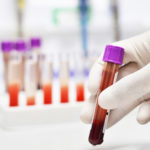Uterine Cancer

What is uterine cancer?
Uterine cancer is the most common type of cancer affecting the female reproductive organs. The uterus is the organ that is also known as the womb, the place in which a baby develops. The endometrium is the inner layer of tissue that lines the uterus. Cancer in this tissue layer, also known as endometrial cancer, accounts for more than 90 percent of uterine cancers. In 2009, there were an estimated 44,000 diagnoses of endometrial cancer and 7,713 deaths (up from 40,000 and 7470 in 2008). Prognosis is good because this type of cancer is usually found early.
The myometrium is the outer layer of muscular tissue of the uterus, and cancer in this area (also known as uterine sarcoma), is much less common.
What are the symptoms of uterine cancer?
Typically, uterine cancer strikes after menopause, but it can also occur before menstrual cycles stop completely. About 90 percent of women with uterine cancer have abnormal vaginal bleeding (bleeding between periods or after menopause). Because this type of bleeding occurs for a number of reasons, it is important to be evaluated by a physician to determine the cause. Other common symptoms include vaginal discharge, urinary difficulties (such as pain with urination, or inappropriate frequency or urgency) and painful intercourse. Pelvic pain and weight loss are typically seen in the later stages of the disease.
Several tests can diagnose uterine cancer. Along with blood work, an endometrial biopsy is often done where a small sample of tissue is often taken from the uterus and examined for cancerous growth. This is usually done by a local biopsy, or by dilation (widening of the cervix) and curettage (scraping of the uterine walls), a procedure known as a “D and C.” Sometimes a transvaginal ultrasound is necessary to determine the location of a particular sample. If the tissue is cancerous, radiologic tests are often done such as abdominal X-rays, CT scans, or MRIs to determine cancer “stages” which label the extent of cancer spread. These range as follows:
- Stage 0: The abnormal cells are found only on the innermost lining of the uterus. This is also called carcinoma in situ.
- Stage I: The tumor has grown through the inner lining of the uterus to the endometrium. It may also have invaded the myometrium.
- Stage II: The tumor has invaded the cervix.
- Stage III: The tumor has grown through the uterus to reach nearby tissues, such as those of the vagina or lymph nodes.
- Stage IV: The tumor has invaded the bladder or intestine. Or, cancer cells have spread to parts of the body far from the uterus, such as the liver or lungs.
What are the causes of uterine cancer?
In endometrial cancer, tumor cells develop in the lining of the uterus. Why this happens is still uncertain; however there seems to be a link with abnormal levels of estrogen. Estrogen stimulates the growth of endometrial tissue, and when the balance of female hormones shifts more towards estrogen versus progesterone, a woman’s risk of developing endometrial cancer increases.
Factors that increase levels of estrogen in the body include early menstruation or late menopause (the longer time having periods increases endometrial exposure to estrogen); never being pregnant; irregularities in ovulation; obesity (due to the production of estrogen by adipose tissue); having a history of ovarian tumors (which can secrete estrogen) and taking drugs like Tamoxifen (for breast cancer) or estrogen replacement therapy. Another significant risk is diabetes, as elevated insulin levels seem to drive an enviroment of estrogen dominance. Those who are older have a higher risk of endometrial cancer as well as those with a history of breast and ovarian cancer. Caucasian women seem to have a higher risk of developing endometrial cancer, but African-American women have a higher incidence of death from it. Finally, women who have an inherited form of colon cancer also have an increased risk (between 40 and 60 percent) of developing endometrial cancer.
What is the conventional treatment of uterine cancer?
Most women with uterine cancer have surgery to remove the uterus (hysterectomy) often with the removal of both fallopian tubes and ovaries (bilateral salpingo-oopherectomy). This is usually done with a laparoscope (a device that allows illumination and surgery through very small incisions) in the lower abdomen. Lymph nodes near the tumor may be sampled or completely removed. Sometimes a satellite lymph node or group of nodes is taken and looked at under a microscope. If the nodes are free from cancer, they are typically spared. If cancer cells have reached the lymph nodes, the disease may have spread to other parts of the body and other therapies may be begun.
After surgery, aggressive forms of endometrial cancer (fast growing tumors, large, deep tumors and those close to blood vessels) and cancer that has spread to other organs are often treated with adjunctive therapy, either in the form of radiation treatments, chemotherapy, hormonal therapy or some combination of the three. Radiation may also be used in the small group of women who don’t elect to have surgery. Doctors use two types of radiation therapy to treat uterine cancer: external and internal radiation. In external beam radiation, a machine outside of the body beams high dose X-rays at a specific location. This is usually done on an outpatient basis most days of the week over several weeks. Side effects include dry, reddened skin and some hair loss to the treated area, decreased appetite and various grades of fatigue. Some women may have vaginal dryness, itching, burning or tightening. Sexual intercourse can be uncomfortable and is often discouraged until after therapy is completed. Radiation also may also cause diarrhea and urinary symptoms.
Internal radiation (also known as brachytherapy) involves tiny radioactive tubes or beads placed into the endometrium through the vagina. Women typically will stay in the hospital for this treatment and not have visitors while the implants are in place (to protect others from radiation exposure). Once they are removed – typically after a few days – a woman is free from radioactivity. Brachytherapy treats only a focused area, and therefore has fewer side effects than conventional X-ray therapy.
Hormonal therapy usually involves a synthetic form of the hormone progesterone given in doses higher than used for replacement therapy in menopausal women. The purpose is to prevent sensitive cancer cells from growing. Hormones are often used for women with uterine cancer who are unable or reluctant to have surgery or radiation therapy. It is also given to those who have metastatic cancer of the rectum, bladder and distant sites like the lungs. Hormone therapy is used as well in those women who have had a recurrence of their cancer. Chemotherapy is often recommended in stage III and IV cancers as well as in certain experimental protocols.
What therapies does Dr. Weil recommend for uterine cancer?
If you are challenged by cancer, Dr. Weil suggests the following changes to your daily routine:
Mind/body Medicine:
- Use techniques such as guided imagery and meditation, and energy medicine modalities such as therapeutic touch and Reiki, to enhance your treatments of choice.
- Get support. Join a support program for people with cancer. The inspiration and hope you’ll find there is priceless.
- Have faith. Don’t underestimate the role of your spiritual life in the healing process.
Exercise:
- Stay active. Regular exercise is an essential part of staying healthy. Engage in gentle physical activity as often as you can.
Diet:
- Eat generous amounts of vegetables and moderate amounts of fruit. Choose organic whenever possible to minimize exposure to pesticide residues that may put an extra detoxification load on the liver. Consider juicing to easily ingest several servings without feeling too full.
- Drink green tea several times a day. Remember that decaffeinated versions are available and quite delicious.
- Concentrate on omega-3 fatty acids either through foods or supplements. Cold-water fish such as salmon and sardines is the best source; vegetarian sources include walnuts and freshly ground flaxseed.
- Have one to two servings of whole soy foods each day. The simplest soy food to include may be unsweetened soymilk as a beverage or ingredient in a smoothie. Also try edamame (whole green soybeans), canned soybeans, tofu, roasted soy nuts and soy nut butter.
- Since insulin plays a role in a women’s estrogen balance, lower the intake of refined sugar, processed flours and sugary beverages to keep blood sugar under ideal control.
- Limit alcohol consumption. In virtually all studies that have looked at alcohol consumption and risk of cancer, regular consumption is linked with increased cancer risk.
- Avoid harmful radiation, UV light, and carcinogenic chemicals.
Supplements
Dr. Weil often recommends certain species of Asian mushrooms to cancer patients and cancer survivors, either used in the diet or taken as supplements. Maitake (Grifola frondosa), shiitake (Lentinula edodes), and agaricus (Agaricus blazei) are all delicious edible mushrooms that have immune enhancing and anti-cancer effects and can be found at specialty grocery stores. These, along with other well-studied medicinal mushrooms, are also available in supplement form. Dr. Weil also suggests taking a good multivitamin with antioxidants like vitamin C, mixed carotenoids (including lycopene), vitamin E in the form of mixed tocopherols and tocotrienols, the mineral selenium, B-complex vitamins including folic acid and vitamin B-12, coenzyme Q-10, and high dose vitamin D3 (ergocalciferol). Each of these supplements has been linked with reducing cancer risk.
Regarding taking supplements while undergoing cancer treatment, Dr. Weil recommends following the advice of Donald Abrams, M.D., an integrative oncologist at the University of San Francisco and a graduate of the Program in Integrative Medicine’s Associate Fellowship at the University of Arizona. Dr. Abrams says that questions about antioxidants are the most frequent ones he gets. In the absence of strong evidence, he now advises patients as follows:
- For those being treated for a possible cure (meaning that their tumors have been removed and that the goal of chemotherapy or radiation is to destroy any remaining cancer cells): Don’t take antioxidant supplements on the day before, the day of, and the day after chemotherapy. Otherwise, it is acceptable to take supplements.
- For patients undergoing radiation therapy: no antioxidant supplements throughout the course of treatment.
- For patients with advanced cancer who are being treated in order to prolong survival and relieve symptoms: it is acceptable to take antioxidant supplements. Because chemotherapy agents differ in their mode of action, it would be helpful to know whether the particular drugs being used work by an oxidative (free-radical-generating) mechanism. Ask the medical oncologist treating you for that information.









